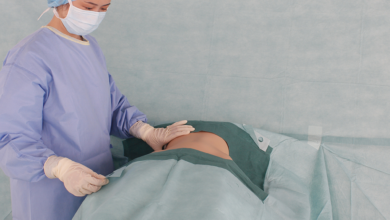What Everyone Must Know About Tendon Repair

Tendon injuries are a common occurance and have the tendency to take a long time to heal. Tendons are the fibrous connective tissues that hold our muscles and bones together and in place. When these fibrous connective tissues are damaged or torn it can cause immense pain and inflammation in the affected area. Tendon injuries can also inhibit day to day activities. The key to overcoming the challenges of tendon injury is to be informed with the right information about tendon repair. Follow this guide on what everyone must know about tendon repair to strengthen your body and repair your tendon with ease.
Tendon Injury is Painful
When tendons are ripped or torn it is not difficult to imagine how painful this can be and even more so depending on how extensive the damage is. The connective tissues that attach our muscles to our bones are fibrous and do not automatically attach themselves when torn. Instead, the body must go through a healing and repair process in order to heal the impaired tendon and restore normal function. It is crucial to follow proper methods in order to heal your tendon correctly and shorten the amount of time you are in recovery.
Rest
Resting is critical in tendon repair. Getting back to normal activities with an injured tendon could further injure the affected area and prolong recovery times. It is vital that rest is a major part of your routine when dealing with tendon recovery. This may mean that you have to relinquish some physical activities for a while such as participating in sports or other physical activities. This can be a frustrating part of tendon repair and recovery but it is absolutely necessary in order to regain full function of the repaired tendon. Take advantage of every opportunity to rest the affected area and ask for help when it’s available so you don’t put further stress on the injured tendon. The connective tissues need time to heal and overuse can inhibit this important process.
Sleep
One of the best and easiest ways to incorporate rest into your daily routine is to get the right amount of sleep. This can be achieved by prioritizing healthy sleep since you may have more time on your hands during tendon recovery. Sleep is a restorative practice that allows our bodies to heal as we snooze and is somewhat like a vacation for our bodies each night. The right amount of sleep reduces stress, increases energy, and produces greater overall health. Try aiming for at least 8-10 hours of sleep each night in order to gain greater recovery in tendon repair. You can foster solid sleep by turning off social media each night, refusing to check the clock throughout the night, and reducing stimulating activities before bed. Women may even need to sleep a couple extra hours in order to receive the greatest benefits from uninterrupted sleep.
RICE
The RICE method is an easy way to encourage tendon repair right from the comfort of your own home. RICE stands for REST, ICE, COMPRESSION, ELEVATION. If the tendons in your foot or hand are broken this method calls for resting the affected area, icing the affected area and using compression on the affected area. Wrapping a tight medical bandage around the injured tended helps to compress the area and relieve pain and inflammation. Placing your hand or foot under a stack of pillow while laying down and elevating the affected area above the rest of your body also helps reduce swelling.
Medication
Medications like tylenol and ibuprofen are powerful tools in helping with tendon repair. These medications are formulated for various ailments and injuries but are especially effective in reducing inflammation and pain in the affected area. If you tendon is injured consult with your doctor to discover the best practices are using these anti-inflammatory pills.
Peptides
Although peptides are being continuously studied, their effectiveness in various studies on lab rats show significant strides in tendon repair advancements and recovery. Researchers completed a study on rats using the peptide BPC 157 and the results displayed an increase in tendon function and repair as opposed to the rats not exposed to BPC 157. Relevant peptide studies continue to produce favorable outcomes in tendon repair and could potentially be used extensively in the future.
Tendon repair is a journey and with the right information and correct execution of healing practices, patients suffering with torn and injured tendons can find help and healing. From getting more rest including sleeping more, using easy at home methods like RICE, and even ingesting medication, tendon repair can be a manageable process that doesn’t infringe significantly on everyday activities. With proper care and following the tips provided your tendon can begin healing and developing normal function again. Visit Naa Songs to find out more information





